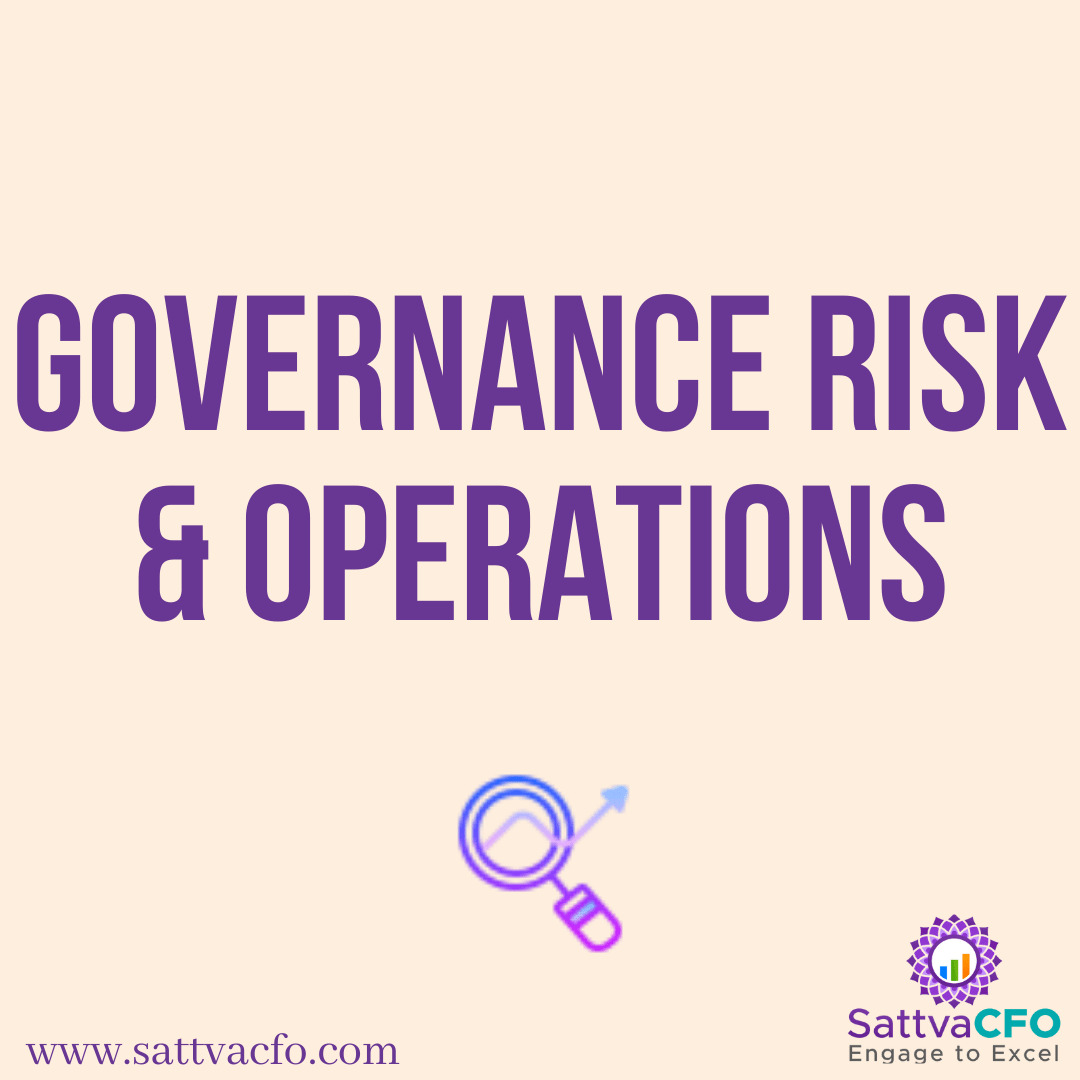Governance, Risk management, and Compliance are three intertwined characteristics that attempt to ensure that a company achieves its goals reliably, manages uncertainty, and behaves with integrity. The combination of processes set and performed by the directors (or board of directors) reflected in the structure of the company and how it is governed and guided toward attaining goals is referred to as governance.
Governance, Risk & Operations
Organizations must streamline and fine-tune their systems and controls today, with regulators, investors, and independent directors emphasizing the importance of corporate governance. Leadership teams frequently consult internal auditors for further assurance on the system’s robustness and risk mitigation strategies.
We concentrate on effective risk mitigation by establishing solid procedures, implementing appropriate internal controls, utilizing technology, and improving performance. The digitization of processes is expanding, leading to an exponential increase in data generation across all corporate functions.
Key Solutions
Corporate Governance
A company’s direction and control are guided by a set of rules, procedures, and processes known as corporate governance. The way firms are governed and for what purpose is referred to as corporate governance. It establishes who has authority and responsibility, as well as who makes decisions. The methods by which a company’s objectives are determined and pursued in the context of the social, regulatory, and market environment are referred to as corporate governance. It is concerned with strategies and procedures for ensuring that a company is conducted so that it meets its objectives while also ensuring that stakeholders can have confidence in the organization’s trustworthiness.
IFC / SOX Compliances
The term is defined in Section 134 of the Companies Act, 2013 as “policies and procedures adopted by the company for ensuring: orderly and efficient conduct of business, including adherence to company policies, protection of assets, prevention and management of frauds and errors, accuracy and completeness of accounting records, and timely preparation of financial statements.”
SOX measures aim to regulate corporate entities’ financial operations and disclosures and those of any of their contracted financial service providers. The regulations cover a wide range of departments, with a few exceptions for IT. Because adequate SOX internal controls necessitate complete file security and full visibility into financial record history conditions that require each IT employee to understand their role in demonstrating SOX compliance, SOX reporting specifically involves IT departments.
Performance Enhancement
The Performance Improvement solution assists you in achieving higher performance by enhancing the efficiency and effectiveness of your company’s core business activities. It helps clients identify and implement cost-cutting initiatives, improve management and control, identify and manage risk, and improve quality by utilizing a thorough grasp of finance, risk management/compliance, IT systems, operations, and human resources. The application of proven experience and skills also aids in providing hands-on assistance in the areas of financial underperformance and cash-flow management. Business Plan would help to accomplish this objective.
Standard Operating Procedures
A standard operating procedure (SOP) is a series of step-by-step instructions developed by a company to assist employees in doing routine tasks. SOPs are designed to increase efficiency, quality output, and performance uniformity while reducing miscommunication and noncompliance with industry laws.
How can SattvaCFO can help in Governance, Risk & Operations?
SattvaCFO provides Governance, Risk & Operations services including Corporate Governance, IFC / SOX Compliances and Management Consulting.




